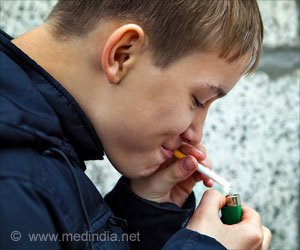Violence Among Male Teens In Urban Neighborhoods Could Be Curbed By Giving High Social Support

“Teen boys in urban neighborhoods are disproportionately exposed to violence and consequently are at higher risk of violence perpetration and victimization,” said the study’s senior author Alison Culyba, M.D., Ph.D., M.P.H., a physician at UPMC Children’s Hospital and assistant professor of pediatrics at Pitt’s School of Medicine.
“Historically, research often has focused on a single type of violence, but our study shows that there are complex co-occurring behavior patterns and shared protective factors that we need to pay attention to.”
Advertisement
The researchers analyzed survey data from a recently completed sexual violence prevention trial that enrolled 866 adolescent boys aged 13- to 19-years-old from lower-resource neighborhoods in the Pittsburgh region. More than three-fourths of the participants self-identified as black and six percent self-identified as Hispanic.
The survey included data on 40 “risk” and 18 “protective” behaviors that were classified into one of seven categories — youth violence, bullying, sexual and/or dating violence, violence exposure and adversities, substance use, school engagement, and career and future aspirations. The participants also rated their personal level of dependable adult social support.
When it came to the data analysis, Culyba and her colleagues took a less conventional approach. “We borrowed methods that have proven effective for large scale genetic analyses,” she said.
The analysis revealed interesting patterns. Teen boys with high social support engaged in approximately eight of the 40 risk behaviors — significantly fewer than those with low social support who engaged in around ten risky behaviors. Those who had high social support and reported more career and future aspirations were less likely to report all types of violent behavior. In contrast, among those with low social support, school engagement was an important protective factor. Feeling happy at a school that promoted diversity was strongly correlated with fewer instances of both physical and sexual partner violence and dating abuse.
The researchers also found patterns in how different violent behaviors co-occurred. The strongest correlations were between different types of sexual violence perpetration behaviors. For example, teens who endorsed posting sexual pictures of partners were 14 times more likely also to report having coerced someone who they were going out with to have sex. On the other hand, while gang involvement was infrequently associated with violence perpetration, it was more frequently reported among those who had been exposed to sexual violence, bullying, or substance use.
“Our analysis revealed how interconnected these behaviors are,” said Culyba. “By creating programs that help parents and mentors support teen boys, we may be able to reduce multiple types of violence at once.”
The authors caution that the study is limited in that the findings don’t demonstrate causative links, and further analysis of the associations is required. “It’s a starting point for beginning to understand detailed patterns of violence at a much deeper level — and for offering new opportunities for prevention,” said Culyba.
Culyba notes that the findings align with the recommendations of the Centers for Disease Control and Prevention’s Connecting the Dots Initiative, which encourages prevention programs that identify and address these common underlying factors through community involvement to keep kids safe.
Source: Eurekalert
Source link
#Violence #Among #Male #Teens #Urban #Neighborhoods #Curbed #Giving #High #Social #Support



